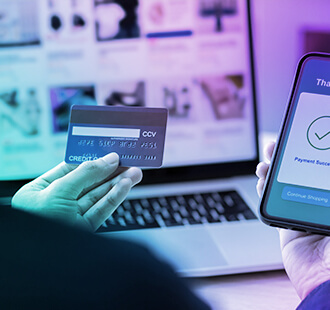
The emergence of Chat GPT (Generative Pre-training Transformer) is revolutionizing the way businesses reach their target audiences. But how does it stack up against professionals, and what does success mean for the future of marketing? In this blog post, we’ll explore the potential impact of GPT on marketing and what it could mean for businesses.
Chat GPT, or Generative Pre-training Transformer, is a cutting-edge AI technology revolutionizing how we approach digital marketing. According to an article by Unimedia Tech, “Internally Chat GPT uses a combination of machine learning algorithms and deep learning techniques to process and generate text responses.”
Using natural language processing and deep learning, Chat GPT enables marketers to create powerful, automated conversations with their customers more efficiently and cost-effectively. With GPT, businesses can engage with customers on a personal level while gathering data and insights to understand customer behavior better.
GPT works by leveraging the latest natural language processing and machine learning advances. Using advanced algorithms, GPT can understand user intent and context and generate personalized, conversational responses. This helps marketers automate the customer service and support process, saving time and resources while still providing high-quality customer service.
Developed by OpenAI, Chat GPT is a multipurpose chatbot. According to an article by Freshered, it can simplify everyday life, as it has several “different functions, including answering questions, solving math equations, writing texts, debugging and fixing code, translating between languages, creating text summaries, making recommendations, classifying things, and explaining what something does, such as a code block.”
How Can GPT Help Marketers?
Generative Pre-training Transformer can provide marketers with valuable insights into user behavior. By analyzing the conversations and responses from users, marketers can gain insight into what kinds of topics customers are interested in, what kind of questions they’re asking, and how best to respond. This data can then be used to improve customer service processes and further optimize marketing campaigns.
GPT is quickly gaining traction as an effective way for businesses to engage with their customers and improve their marketing efforts. With its potential to save time and resources while providing excellent customer service, GPT looks set to become an essential tool for digital marketers in the near future.
GPT can be used to create automated chatbots that provide personalized customer support. These chatbots can answer common questions and provide detailed product information quickly and accurately. In addition, they can also be used to recommend products and services that are tailored to each customer’s unique needs. This means that customers will have access to the most relevant products and services for their needs.
GPT can also be used to generate content for marketing campaigns. This could include emails, webpages, and social media posts tailored to each customer’s interests. By creating content relevant to each customer’s needs, companies can increase the chances of success for their campaigns.
Finally, GPT can be used to analyze data from customer interactions. This data can then be used to improve customer service, identify customer trends, and inform future marketing strategies. This allows companies to stay ahead of the competition by predicting customer behavior and understanding their needs better.
Overall, GPT has the potential to revolutionize the way marketers work by offering a more personalized and efficient customer experience. By leveraging this technology, marketers can provide better customer service, create more effective marketing campaigns, and optimize their strategies based on customer data.
The Pros and Cons of GPT
Generative Pre-training Transformer (GPT) technology has recently gained popularity, it has various advantages, but it is not without drawbacks.
One of the primary advantages of GPT is its speed and efficiency. Because GPT can quickly process large amounts of data, marketers can generate more effective campaigns with less effort. Furthermore, GPT can also generate more accurate predictions than humans, which helps marketers identify trends and target customers more effectively.
However, there are also some potential downsides to using GPT technology. For example, GPT relies on existing data, so it can be limited in its ability to generate truly novel ideas or campaigns. Additionally, because GPT relies on human-labeled datasets, it may have difficulty understanding nuances such as sentiment or cultural context. This can limit its effectiveness in certain marketing contexts.
Ultimately, GPT has the potential to be a powerful tool for marketers. However, it is important to recognize the benefits and drawbacks before implementing GPT into any marketing campaign.
According to a recent Forbes article, forging relationships with a target audience as a marketer is crucial. “AIs like ChatGPT or GPT-3 can assist with this, they are still not able to do it as strategically and effectively as a human.” With proper training and evaluation, GPT can effectively help marketers reach their audiences.
What the Future Holds for GPT
The potential of GPT technology in the marketing field is huge. As with any new technology, there are both pros and cons to using it. However, the benefits could be immense if GPT can be used successfully.
On the positive side, GPT could automate many of the tedious tasks associated with marketing. This would free up time and resources that could be used more efficiently. Additionally, GPT could help marketers become more creative and innovative with their campaigns, allowing them to generate more creative content quickly and efficiently.
However, there are still some concerns when it comes to GPT technology. It could lead to a lack of control over the creative process, as marketers rely on the algorithm to create content rather than their skills and experience. Additionally, while GPT may be able to generate more creative content faster than traditional methods, it still requires a human touch to make sure it’s relevant and engaging to audiences.
It’s impossible to know what the future holds for GPT and its impact on marketing. However, one thing is certain: GPT is an incredibly powerful tool that could revolutionize how marketers create content. By leveraging its potential and understanding its limitations, marketers can use this technology to create innovative, effective campaigns that engage and inspire audiences.
There’s a high chance that the majority of content we consume today was generated through AI. Even this blog post. What do you think? Have you tried ChatGPT?

















